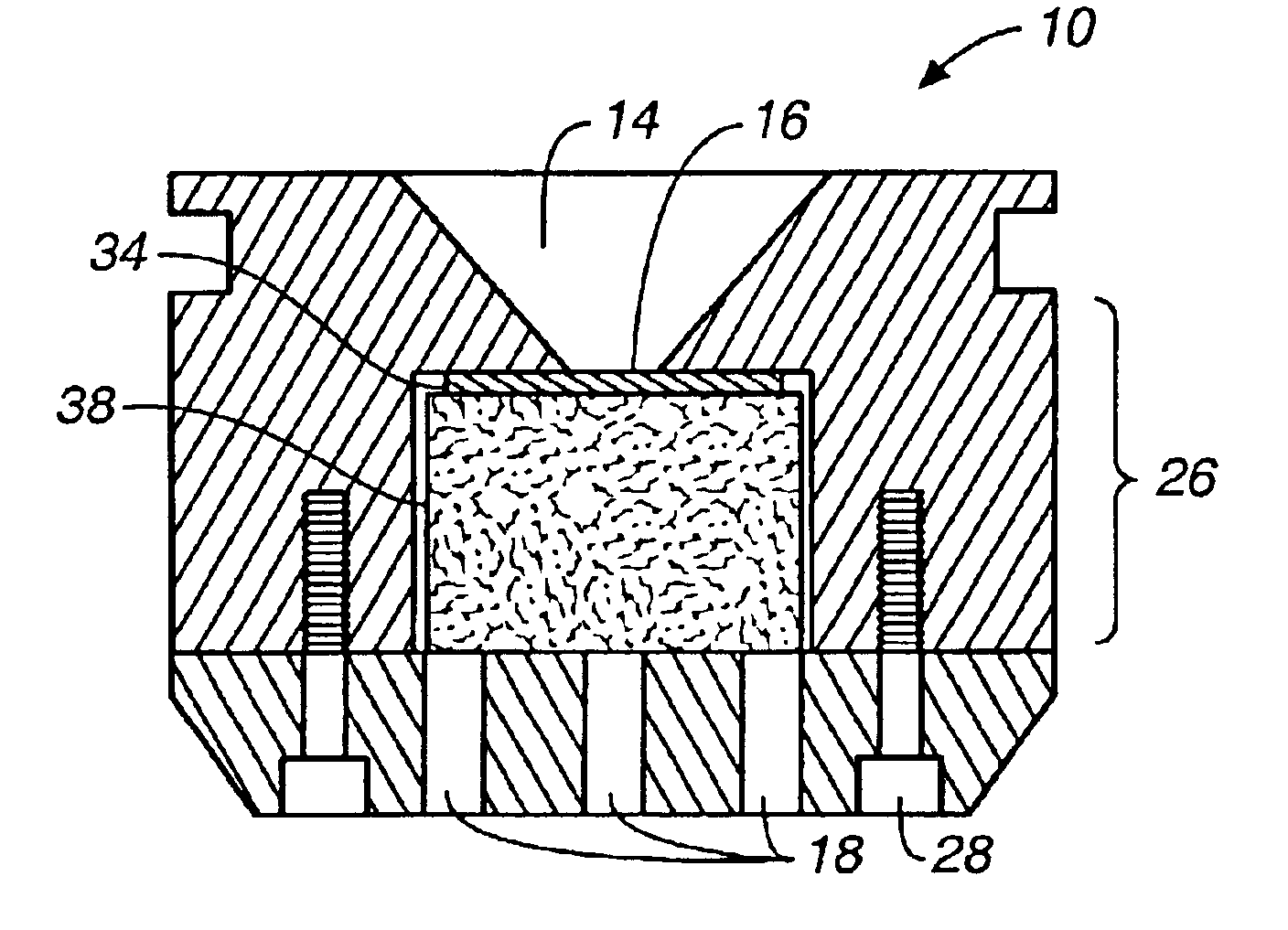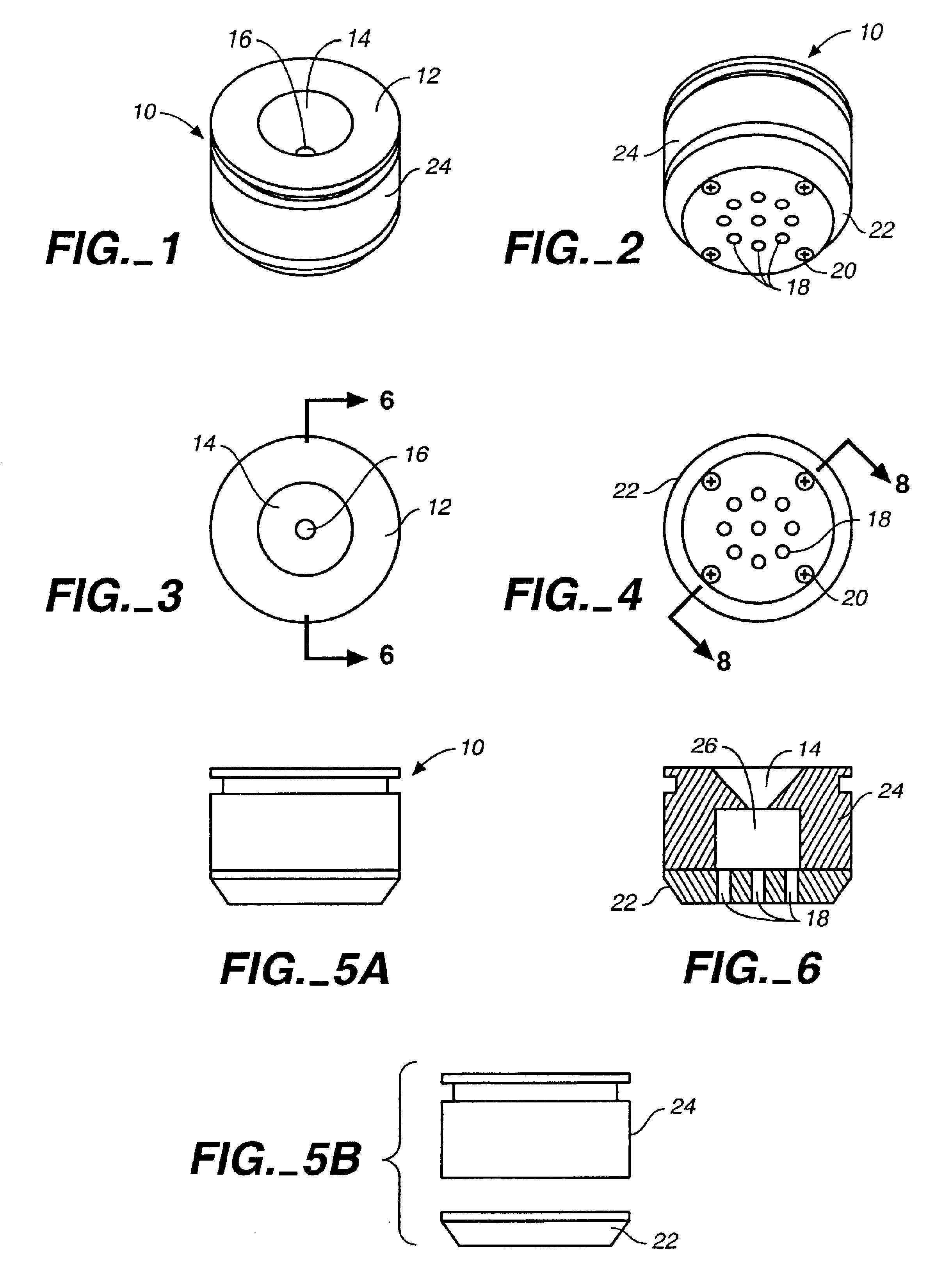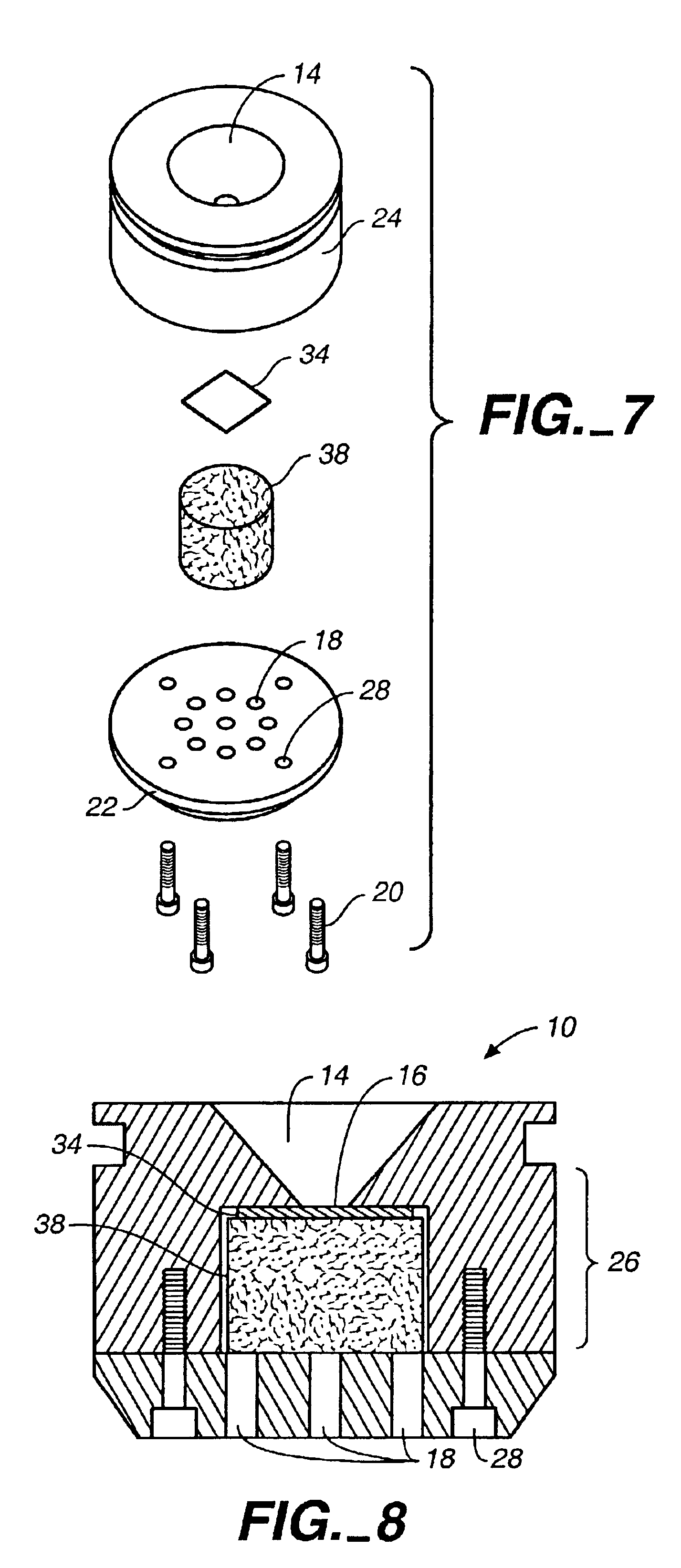Apparatus and method for the measurement of cells in biological samples
- Summary
- Abstract
- Description
- Claims
- Application Information
AI Technical Summary
Benefits of technology
Problems solved by technology
Method used
Image
Examples
Embodiment Construction
The concentration device (“device”) 10 is shown in FIG. 1. Specimens are placed in cone 14 in the top surface 12 of the device 10. The specimen flows through the opening 16 at the bottom of cone 14; cells of interest are trapped on a membrane at the opening 16, which matches the field of view of the imaging system being used to count the cells trapped on the membrane. The fluid in the specimen, which is not trapped on the membrane, flows into the second chamber of the device 10 (see FIG. 6, below). Both cone 14 and the second chamber are contained in the main body 24 of the device 10.
As shown in FIG. 2, the bottom portion 22 of the device 10 is attached to the main body 24 by screws 20. The bottom portion 22 of the device 10 also features a vacuum port 18 where a vacuum system may be attached.
An overhead view of the device is provided in FIG. 3. A cone 14 which receives specimens is cut into the top surface 12. The walls of cone 14 are smooth and treated to prevent cell adhesion and...
PUM
| Property | Measurement | Unit |
|---|---|---|
| Length | aaaaa | aaaaa |
| Length | aaaaa | aaaaa |
| Pressure | aaaaa | aaaaa |
Abstract
Description
Claims
Application Information
 Login to View More
Login to View More - R&D
- Intellectual Property
- Life Sciences
- Materials
- Tech Scout
- Unparalleled Data Quality
- Higher Quality Content
- 60% Fewer Hallucinations
Browse by: Latest US Patents, China's latest patents, Technical Efficacy Thesaurus, Application Domain, Technology Topic, Popular Technical Reports.
© 2025 PatSnap. All rights reserved.Legal|Privacy policy|Modern Slavery Act Transparency Statement|Sitemap|About US| Contact US: help@patsnap.com



